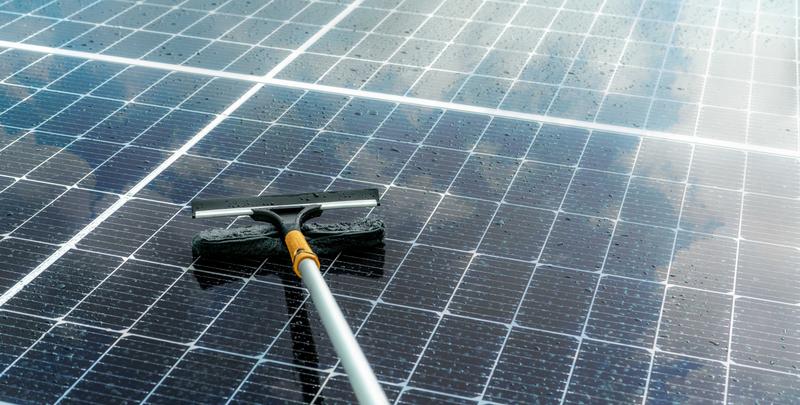
When you’re attempting to find a substantial-effectiveness Solar Panel Cleaning brush, Skilled-grade
Why Solar Panel Cleaning Issues
Photo voltaic panels seize Electrical power at their best when clean up. Dust, pollen, hen droppings, and smog lower performance—at times by 20% or maybe more. Common cleansing will help keep optimum general performance, increase panel everyday living, and secure your expense.
Key Rewards:
- Enhanced energy output
- Lower electrical power costs
- Prolonged panel lifespan
- Diminished danger of micro‑cracks due to thermal hotspots
Forms of Photo voltaic Cleaning Instruments
Selecting the ideal Instrument relies on your setup, drinking water availability, and wished-for ease. Groups include:
- Drinking water‑driven photo voltaic brush systems
- Transportable photo voltaic panel cleansing package bundles
- Pure water cleaning techniques
- Rotary photo voltaic brushes and extension poles
Drinking water Powered Solar Brush Methods
These brushes connect with a h2o source and spin although dispensing h2o, combining cleaning and lubrication in one phase. The result: spotless panels devoid of scratching.
Vital Attributes:
- Integrated drinking water feed throughout the brush head
- Smooth bristles Safe and sound for glass surfaces
- Rotary movement decreases handbook exertion
- Mounts on extension poles for rooftop access
Moveable Solar Panel Cleansing Kit
A whole photo voltaic panel cleaning package commonly incorporates:
- Brush head (fastened or rotating)
- Extension pole (adjustable lengths approximately 6 m)
- Hose adapters or brief‑link fittings
- Pure‑h2o tank or filtration program
- Soft microfiber towels or squeegees
- Non‑abrasive cleansing Alternative (if allowed)
Advantages of All-in-Just one Kits:
- Start off cleansing with small set up
- Compact for storage or journey
- Suitable with household or business photo voltaic arrays
Pure Drinking water Photo voltaic Cleansing Devices
These devices purify regional water—removing minerals and Filth—so it won’t go away scale or streaks. Pure drinking water empowers Skilled-quality outcomes devoid of chemical substances.
How It really works:
- Pretreatment filtration (sediment, carbon, ion exchange)
- Final deionization or reverse‑osmosis phase
- Filtered drinking water circulated by way of brush for cleansing
- Residue‑absolutely free drying—no spots or streaks still left powering
Rotary Photo voltaic Brush & Extension Poles
For large solar arrays or commercial use, a power-rotating head with a telescoping extension pole helps make cleansing effective and Harmless.
Positive aspects:
- Less Bodily effort, more rapidly protection
- Attain roofs and floor‑mounted panels conveniently
- Adjustable shaft lengths for varying angles
- Universal brief‑connect tricks for accessories
Focus on Protection & Very best Techniques
Cleansing photo voltaic panels entails heights and slippery surfaces—basic safety to start with:
- Use non‑conductive extension poles
- Steer clear of strain washers which can crack glass
- Work early or late in order to avoid glare and heat
- Use grips and slip-resistant sneakers
- Notice area water‑use guidelines or limitations
Phase‑by‑Phase Cleaning Program
- Convert from the photo voltaic inverter or assure process is deactivated
- Rinse panels with small‑tension h2o
- Utilize a brush (or photo voltaic brush kit) with drinking water feed
- Scrub gently in overlapping, linear passes
- Rinse completely with thoroughly clean water
- Dry with microfiber squeegee or soft towel—provided that desired
Deciding on the Ideal Photo voltaic Panel Cleaning Instrument
Contemplate your setup along with your water obtain:
Servicing & Care Guidelines
- Flush hose and brush after Just about every use
- Shop dry, cleanse, and faraway from UV exposure
- Switch worn brush heads—and Verify bristle softness
- Inspect seals and connectors for leaks
- Swap or clean filters in pure‑water devices routinely
Eco-Welcoming Cleaning Rewards
Accurate cleansing prolongs photo voltaic panel efficiency and decreases Electricity squander. Using water on your own—devoid of soaps or substances—helps preserve nearby ecology and avoids runoff pollution.
How Solar Panel Cleaning Impacts ROI
Wise upkeep employing excellent brushes and kits retains process performance topped up, lessening the payback interval and maximizing Electrical power generate eventually.
pure water solar cleaning
Cost Considerations & Value
- H2o‑run solar brushes are Expense-successful and durable
- Pure water units involve upfront investment but give dependable, place‑free of charge cleaning
- Rotary brush kits Strengthen efficiency—worth it for giant installations
- Do-it-yourself kits help save labor charges; Skilled providers cost extra but unencumber your time and effort
Common Works by using of Solar Panel Brushes
- Household rooftops
- Industrial photo voltaic farms
- RV or mobile installations
- Photo voltaic carports
- BIPV segments (creating‑built-in photovoltaics)
Buyer Testimonials & Use Situations
“This solar panel cleaning brush made a apparent difference within just minutes—dust gone, no streaks, and our output improved!”
“Upgrading to the water‑driven photo voltaic brush saved hours of scrubbing. Combined with a pure h2o method, the panels seemed new.”
FAQs About Solar Panel Cleaning
How frequently should panels be cleaned?
Every single six to 12 months, dependant upon your local climate—much more typically in dusty or pollen-heavy regions.
Can rain clear photo voltaic panels?
Rain allows but doesn’t get rid of Grime buildup or movie levels—handbook cleansing yields improved efficiency.
Can I use tap drinking water?
Tap drinking water may well leave mineral residue. A
Can cleansing destruction panels?
Provided that abrasive applications or high-pressure washers are employed. Generally use soft bristles, reduced-stress, and follow manufacturer recommendations.
Pro Strategies for Solar Panel Owners
- Clean early early morning or night in order to avoid thermal pressure
- Keep an eye on output info—if functionality drops, clear panels
- Maintain panels angled—standing water encourages algae progress if left too extensive
- Rotate brush heads periodically to keep up even dress in
Conclusion: A Brush For each and every Need to have
No matter whether you’re looking for a cost-helpful
Check out the entire line of brushes and extras designed specifically for photo voltaic cleansing at